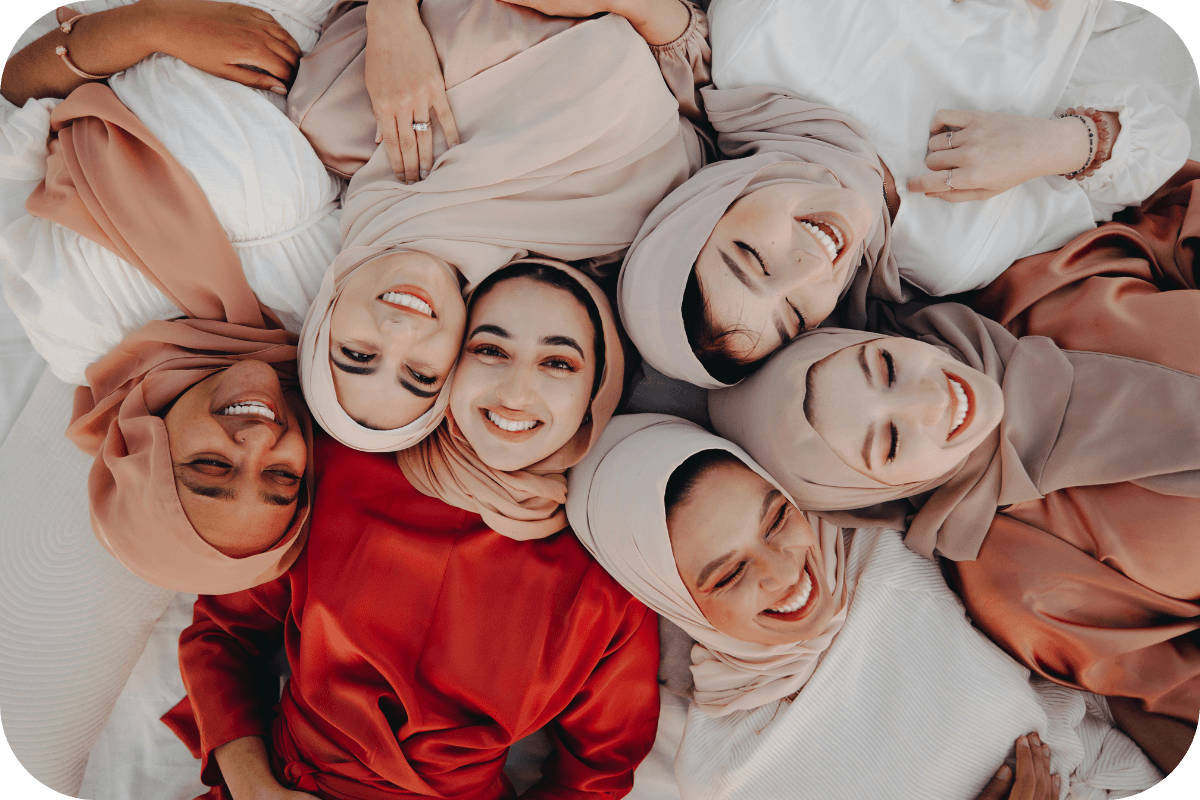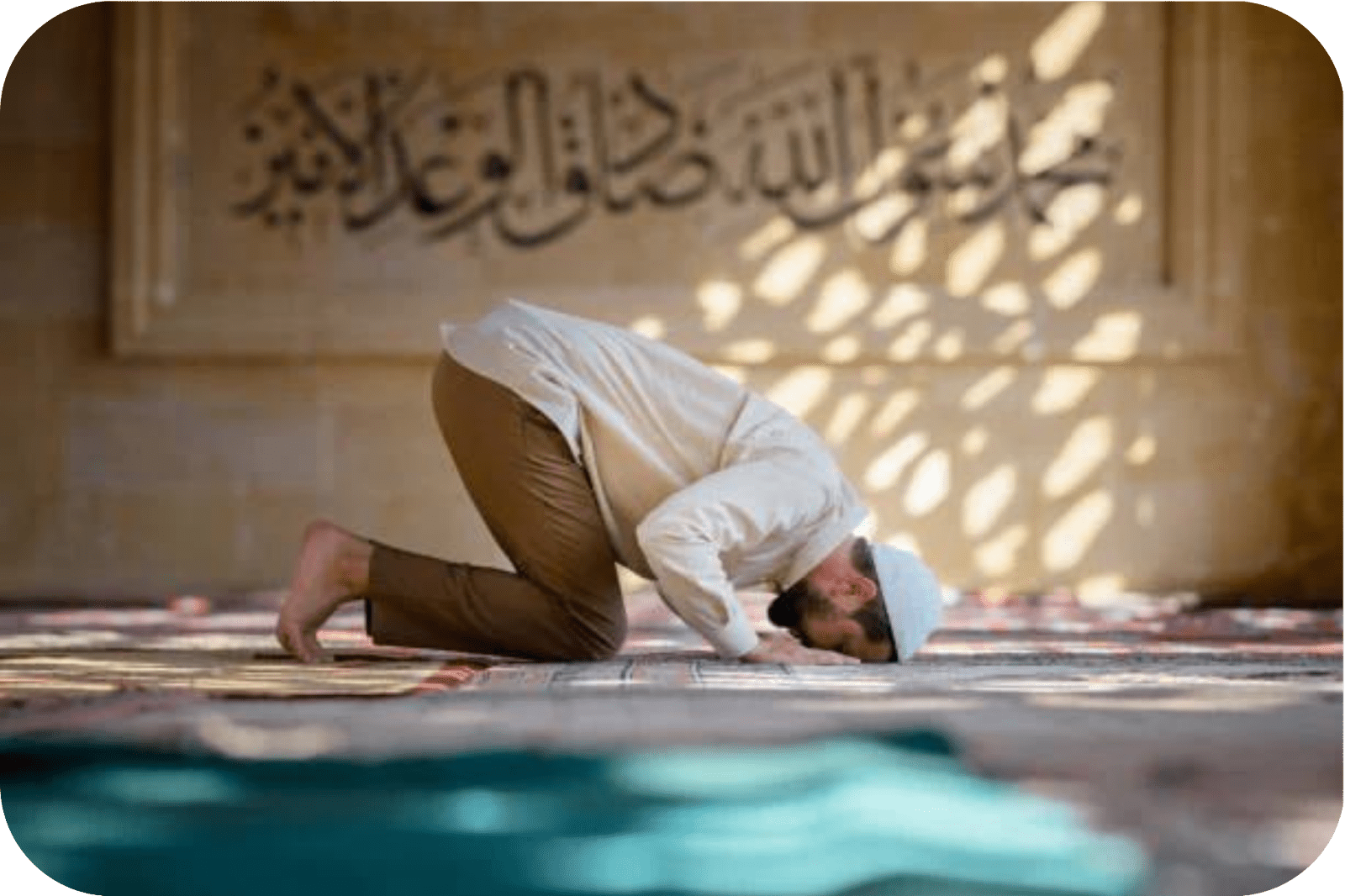Why do Muslim women wear a Hijab?
Why do Muslim women wear a Hijab?

The Hijab is a distinctive garment worn by Muslim women all over the world. It has become a symbol of identity and faith for Muslim women, but have you ever wondered why they choose to wear it? In this article, we will explore the various reasons behind the significance of the Hijab and its role in the lives of Muslim women.
What is Hijab?
Before diving into the reasons for wearing a Hijab, let's first understand what it actually signifies. The word "Hijab" itself means "veil" or "curtain" in Arabic. It refers to the clothing that Muslim women wear to cover their bodies and hair.
The Hijab represents more than just a piece of cloth; it symbolises a woman's commitment to her faith, her identity as a Muslim, and her desire to pursue a life of piety and modesty.
To explore further insights into the significance of modesty among Muslim women, you can find our detailed blog post here.
What Is the purpose of wearing the Hijab?
1. Modesty
One of the primary reasons Muslim women wear the Hijab is to preserve their modesty, you can explore this further in our recent blog about why Muslims wear modest clothing. Islam places a strong emphasis on modesty and encourages both men and women to dress in a way that does not draw unnecessary attention to their physical appearance.
By wearing the Hijab, Muslim women are able to focus on their character and inner qualities rather than their outward beauty.
Prophet Muhammad (peace be upon him) highlighted the significance of modesty, expressing:
“Faith has over seventy branches or over sixty branches, the most excellent of which is the declaration that there is no god but Allah, and the humblest of which is the removal of what is injurious from the path: and modesty is the branch of faith.”
(Sahih Muslim, 35)
2. Redefining beauty standards based on faith
Another significant aspect of the Hijab is its role in redefining conventional beauty standards based on faith. In a society where individuals are frequently judged by societal beauty norms, the Hijab offers Muslim women a powerful means to challenge and redefine these ideals. It enables them to embrace their inherent features, societal pressures.
You can explore our blog featuring various Hijab styles that exemplify this unique expression of faith-based fashion.
3. Protection
Wearing the Hijab also serves as a means of protection for Muslim women. It acts as a shield against unwanted attention and potential harassment or objectification. By covering their bodies and hair, Muslim women feel a sense of security and control over their own bodies, allowing them to navigate public spaces with confidence.
According to a study published by the National Center for Biotechnology Information (NCBI), women who wear the hijab reported experiencing significantly less sexual harassment in public compared to those who do not. Moreover, a survey conducted by the Council on American-Islamic Relations (CAIR) revealed that an overwhelming 60% of Muslim women who wear the hijab feel notably more secure when navigating public spaces while adorned in it.
Explore Riwaya's diverse range of Hijabs and modest clothing, tailored to express your individuality, honour your values, and celebrate your personal style.
The comprehensive meaning of Hijab in Islam
While commonly perceived as a headscarf that covers the hair, in Islam, the Hijab refers to a style of clothing that covers the body appropriately this includes covering the hair, neck, and chest, and wearing loose-fitting garments that do not expose the shape of the body, such as tight jeans, leggings, or revealing tops, except for the face and hands. The principle behind this lies in the religious teachings of Islam. In the Quran, Surah An-Nur (24:31) highlights the requirement on Muslim womens should dress:
“And tell the believing women to lower their gaze and guard their chastity, and not to reveal their adornments.”
(Surah Al-Noor, verse 31)
This verse highlights that for Muslim women, modesty is seen as a way to demonstrate their devotion to God and fulfil their religious obligations. By adhering to the principles of modest dress, they believe they are obeying God's commandments and striving to be pious individuals.
What does the Hijab represent?
The hijab signifies the concept of 'haya' (modesty and shyness) in Islam, denoting the safeguarding of a woman's beauty and privacy, typically reserved for her family members (Mahrems).
For many, the hijab is also considered a marker of transition into adulthood, as its obligation often coincides with reaching maturity, often associated with the onset of menstruation.
This aspect highlights the hijab as a symbol of responsibility and maturity for Muslim women.
How important Is Hijab in Islam?
The importance of Hijab in Islam cannot be overstated. It is considered an obligatory act of worship for Muslim women, reflecting their devotion to Allah and their commitment to living in accordance with Islamic teachings.
For many Muslim women, wearing the Hijab is an integral part of their religious identity, enabling them to feel a deep sense of connection to their faith and community. The Quran emphasises modesty and righteousness in Surah Al-Ahzab (33:59):
“O Prophet, tell your wives and your daughters and the women of the believers to bring down over themselves [part] of their outer garments. That is more suitable that they will be known and not be abused. And ever is Allāh Forgiving and Merciful.”
(Surah Al-Ahzeb, verse 59)
This verse instructs women to cover themselves modestly with outer garments, emphasising modest attire for recognition and protection against potential harm or abuse. It underscores the importance of modesty as a means to be recognized for dignity and faith, rather than being subjected to objectification or harm.
Was there Hijab before Islam?
Although the hijab is now purely an Islamic symbol, it has historical roots that predate the inception of Islam. Evidence shows that the practice of covering women's heads existed in societies preceding the advent of Islam.
Before the time of Prophet Muhammad's teachings (peace be upon him), and throughout history, diverse cultures, including Jewish, Christian, and Hindu societies, upheld the practice of women covering their heads for multifaceted reasons:
- Jewish Tradition: Women covering their heads as a symbol of modesty and cultural adherence.
- Christian Practice: Emphasising modesty, purity, and respect during religious ceremonies.
- Hindu Traditions: Covering the head as a gesture of devotion and respect towards deities and sacred elements.
- Asian Societies: Historical practices involving head coverings for women as a sign of cultural norms, modesty, or in some cases, a mark of social status or traditional attire.

Conclusion
The Hijab holds a significant role in the lives of Muslim women, encompassing various meanings and purposes. From promoting modesty and resisting societal beauty standards to providing a sense of protection and adhering to cultural expectations, the Hijab serves as both a personal and communal declaration of faith.
At Riwaya we offer a range of modest and chic Hijabs tailored to your style and faith, find your perfect ensemble and embrace fashion that resonates with your values.

Buying on Riwaya
Experience elegance and modesty combined at Riwaya! explore our Islamic women's clothing collection Today. Elevate your style, embrace individuality, and donor religious values with our thoughtfully curated collection of modest clothing like Hijabs and Abayas, from our trusted sellers. Discover the Perfect Blend of Fashion and Faith.

Selling on Riwaya
Calling all creators in the world of Islamic fashion! Riwaya is your avenue for success in the realm of elegant modest wear and beyond.
With Riwaya, you get access to a vast, engaged community of Muslim consumers actively seeking the finest Islamic modest wear like yours, by joining us, you tap into a network that bridges the gap between Islamic product sellers and the thriving global Muslim community.
Plus, our platform offers fantastic features and tools to enhance your sales experience, ensuring your products receive the attention they deserve. Become a seller with Riwaya today and let your products find their perfect audience effortlessly.
FAQs
Q1: Why do Muslim women wear the hijab?
The hijab is worn by Muslim women as an expression of faith and modesty, following religious beliefs and teachings.
Q2: Is wearing the hijab mandatory in Islam?
Many Muslim scholars interpret the hijab as obligatory, while interpretations vary among different sects and individuals within the Muslim community.
Q3: Does the hijab hold cultural significance or is it solely religious?
While the hijab has religious roots, it also bears cultural significance in various regions, with different styles and interpretations influenced by cultural norms.
Q4: Are there different types or styles of hijab?
Yes, various styles of the hijab exist, such as the traditional headscarf covering the hair and neck, alongside other types like the niqab (face veil) or the khimar.
Q5: Can non-Muslims wear the hijab?
Non-Muslims may wear the hijab as a sign of respect in certain contexts or to experience solidarity during specific events, although it doesn't hold the same religious significance for them.
Q6: At what age do Muslim girls begin wearing the hijab?
The age at which a Muslim girl starts wearing the hijab varies among families and communities, often occurring at puberty or when she feels ready to embrace it. This decision reflects personal readiness rather than a set age, aligning with Islam's emphasis on personal choice and no compulsion.
Q7: Is the Hijab the only form of modest clothing in Islam?
No, while the hijab is a recognizable symbol of modesty, Islamic teachings encompass various forms of modest clothing. Modesty in attire includes loose-fitting garments that cover the body adequately, such as the abaya, jilbab, or other culturally appropriate clothing that aligns with Islamic principles.



